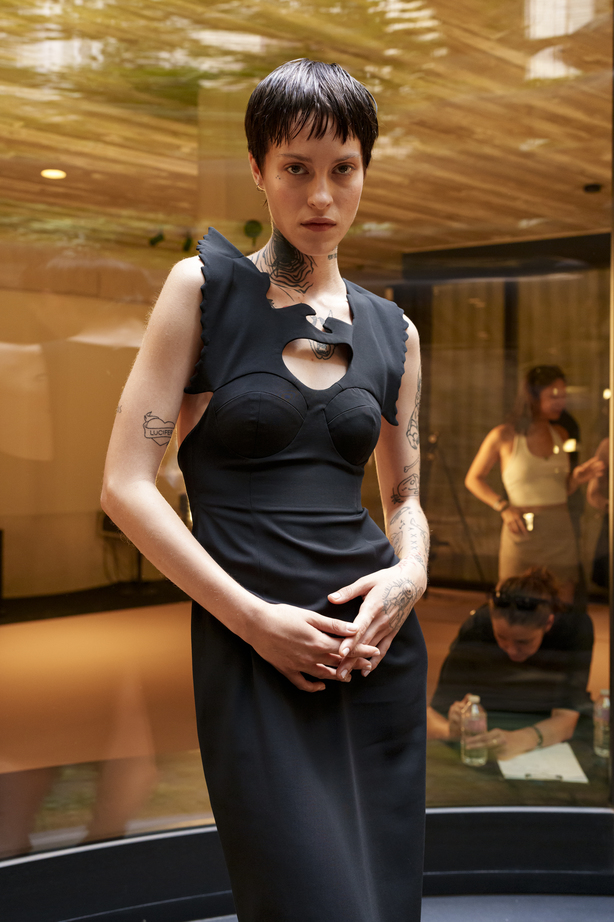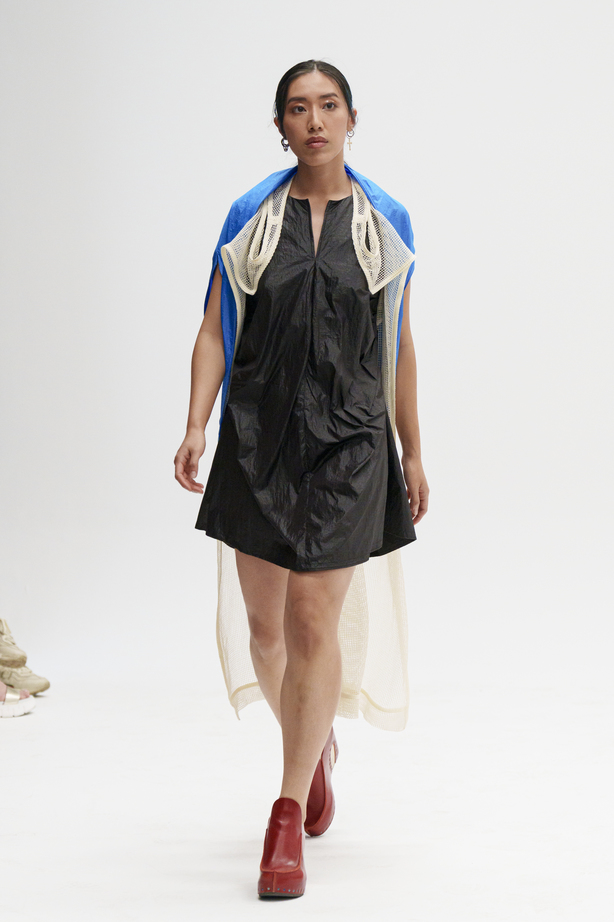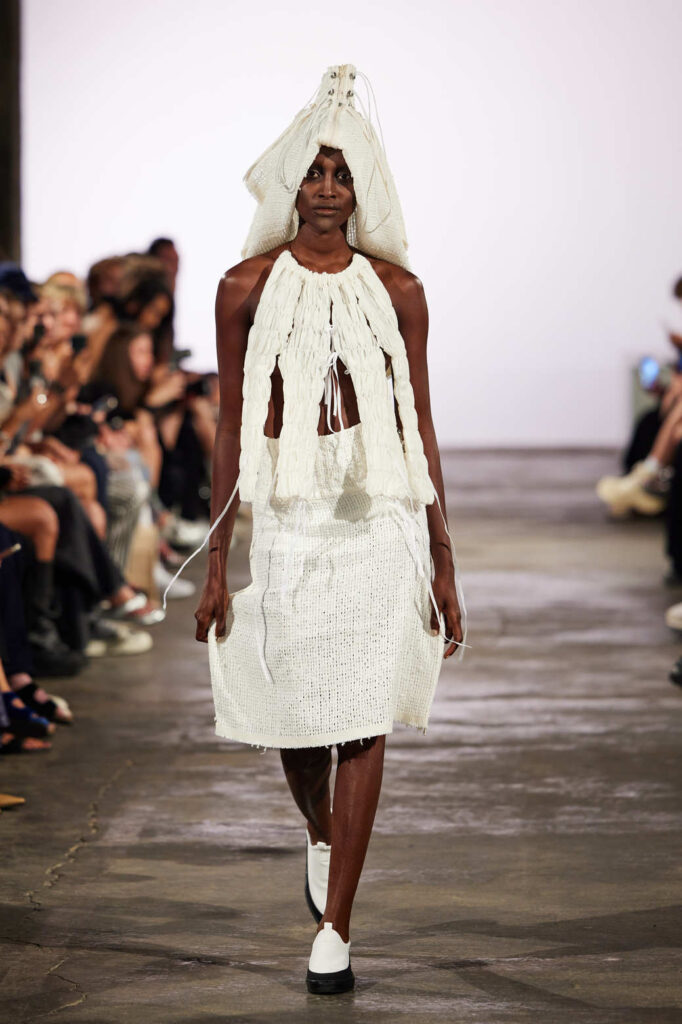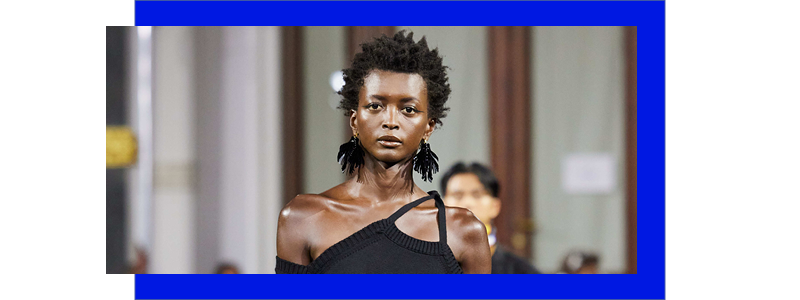Berlin sets the stage for groundbreaking trends that grip the global fashion scene. This season, the biggest trends dominating the runways and seen on the streets are corsets, deconstruction, a hint of Y2K, and sculptural and architectural influences. From eco-conscious collections embracing recycled materials to gender-neutral fashion breaking traditional norms, Berlin Fashion Week celebrates the fusion of fashion and progressive ideals. Let’s explore Berlin Fashion Week’s biggest trends.
Cover photo: courtesy of Berlin Fashion Week and Studio William Fan
–
Biggest trends at Berlin Fashion Week
Berlin Fashion Week showcases great trends and upcoming aesthetics (soon to be adopted by the rest of the world). For example, the low-waist maxi skirt trend exudes effortless elegance and bohemian charm. Once started at Maison Margiela in the ’80s, the corset trend offers an alluring and empowering appeal. Additionally, the deconstruction trend challenges traditional construction, celebrating imperfection and blurring fashion boundaries. As you may have noticed, Berlin Fashion Week has everything: from the cool kids to designers to have on your radar and, of course, the best after-parties.
–
Also, read: Berlin Fashion Week is a wrap – and these are the designers to have on your radar
–
Corsets and cottage
Bridgerton is still in full force, looking at the biggest trends at Berlin Fashion Week. Many collections featured corsets in some form, mostly with lacing as the central focus. This revival of a classic garment brings a contemporary twist to traditional corsets, offering a fusion of sensuality and modern style. Seen on runways and embraced by fashion influencers, the corset trend builds on Netflix’s heritage and how the streaming service has changed fashion for good. Cottagacore and corsets were mainly prevalent at Bobkova, Melisa Minca, and SF1OG.
–



Deconstruction
The deconstruction trend, originally pioneered by Maison Margiela in the 1980s, has resurfaced as a movement at Berlin Fashion Week. The style challenges traditional notions of construction and embraces asymmetry, raw edges, and unconventional design elements. With its rebellious spirit and artistic approach, deconstruction creates visually captivating and thought-provoking pieces, as seen at Melisa Minca, Namilia (where Birkin Bags were translated into tops and skirts), DZHUS, Acceptance Letter Studio, Avenir, SF1OG, and PODYH.
–


The big buckle belt
German girls like to spice things up a little or a lot. Hence, the big buckle belt trend has overtaken Berlin fashion, making a bold statement on runways and city streets alike. With oversized buckles in various shapes and materials, this trend adds a touch of edginess and lots of Y2K vibes to any outfit.
–
Low waist maxi skirt
Another Y2K heritage: the low waist maxi skirt. According to Berlin’s street style, the low-waist maxi skirt trend is making a stylish comeback, exuding effortless elegance and bohemian charm. This fashion-forward trend features skirts sitting comfortably at the hips, creating a relaxed, free-spirited silhouette – in line with Berlin’s left-oriented fashion crowd. However, it isn’t entirely what it used to be. Relaxed and free-spirited indeed, but with a grungy edge. Chunky boots and spaghetti tops were effortlessly combined with this Y2K skirt to create a modern grunge aesthetic as only Berlin women can.
–


–
Monochrome
The monochrome fashion trend has taken center stage at Berlin Fashion Week, showcasing the power of simplicity and elegance. Embracing a single color palette from head to toe, this trend creates a sleek and sophisticated look. Whether in classic black and white (seen at Esther Perbandt and on the streets of Berlin) or vibrant hues (seen at William Fan), monochrome ensembles capture attention with their minimalist yet impactful aesthetic.
A German take on “je ne sais quoi“
Berlin fashion women must have looked at their French neighbors for inspiration on what to wear. Their sense of je ne sais quoi is inescapable, and we witnessed a similar vibe at the Berlin fashion girls. A certain sense of undoneness was the central point of attention of almost every look the German audience wore to shows. While Parisian women stem this nonchalance from sophistication, German women borrowed their aesthetic from the grunge era a few decades ago. Nevertheless, there are similarities for sure. If they do agree, is another matter.
Also, read: Berlin Fashion Week’s street style embraced individuality










